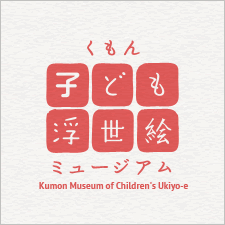Among bijinga and yakusha-e, flowing strands of hair and hairlines were one of the beautiful aspects of o-kubi-e, which focused on portraying a person’s face. This technique created by the horishi’s passion for creating beautiful art by drawing hair strands is called kewari. The kewari technique found in some prints, which delicately creates beautiful hairlines, features transcendent, ultra-fine carvings of two pieces of hair carved in one-millimeter widths. The kewari technique was considered to be one of the most difficult techniques, one that could only be performed by the head carver called a kashirabori.
How an ukiyo-e is created


One of the distinguishing characteristics in the production of ukiyo-e was the division of labor among the eshi, the horishi and the surishi under the supervision of a hanmoto, the publisher. They spent an extraordinary amount of time and effort—beyond our current imagination—on carving and printing, especially for multi-color prints, such as nishiki-e. Excellent skills on the part of the carvers and printers were indispensable for realizing the world envisioned by the artist who drew the original.
After receiving a request from the hanmoto, the eshi(painter) draws a sketch called a gako using only black ink to create the final sketch, known as a hanshita-e. Based on this final sketch, the horishi carves a monochrome version on the woodblock called an omohan. Once the kyogozuri (key print) is printed, the eshi carries out the irosashi (color instructions) and attends the printing process that follows. This is believed to be the case because the complete picture of nishiki-e, such as the overall color concept and detailed carving instructions, existed only in the mind of the eshi.
The horishi(sculptor) carves the omohan based on the hanshita-e and each irohan (woodblock for printing each color) according to the irosashi (color instructions) of the eshi. In ukiyo-e, carving a face and hair required the most sophisticated skills, but a hanshita-e drawn by an eshi was only a rough sketch done in simple lines. Detailed carving, such as carving every single piece of hair, was solely dependent on the aesthetic sense and capability of the horishi.
-


-


-


-


Using vermilion ink, the eshi designates colors for individual key print sheets (kyogozuri) that were printed from the completed omohan.
-


In such a way as the hanshita-e is used when making the omohan, the kyogozuri created by the eshi is mounted on the woodblock, which served as a guide when the irohan is carved.
The surishi(printer) prints the carved woodblock on the paper to complete the ukiyo-e. Calculating the overall balance of the print and fine adjustments of the woodblock, the paper and the paint were significant roles for the surishi. Generally, an omohan, which served as the foundation, was printed first to avoid displacement of the irohan and then each irohan was printed over it. When printing the irohan, the lightest color with the smallest area was printed first, with the order changing to darker colors and larger areas to achieve an aesthetic finish.

 Toto Meisho Meoto Zukushi no Uchi Ueno Sannai Meotosugi [Famous Places in the Eastern Capital, Meoto Zukushi Coupled-Pines in Ueno Sannai]
Toto Meisho Meoto Zukushi no Uchi Ueno Sannai Meotosugi [Famous Places in the Eastern Capital, Meoto Zukushi Coupled-Pines in Ueno Sannai]
Sadatora (Gofutei Sadatora/Utagawa Sadatora)

Karazuri(embossing) is a printing technique used to create an embossed effect by applying strong pressure without any ink applied to the woodblock. For example, this technique creates an embossed effect on white, fluffy objects, such as snow and cotton, or adds depth to fabric and its designs and outlines. When printing on uneven, high-quality paper, the surishi himself did the printing by applying strong pressure to the paper with his elbow without using a baren (a small pad of bamboo leaves used for rubbing the paper on the woodblock). There is also a technique called nunomezuri, which employs fabric glued to an irohan to emboss the design of the weave and texture onto the paper.

 Yoshitoshi Manga Urashima no Ko Ryugujo Yori Kikoku no Zu [Urashima Taro Returning from the Dragon King’s Palace]
Yoshitoshi Manga Urashima no Ko Ryugujo Yori Kikoku no Zu [Urashima Taro Returning from the Dragon King’s Palace]
Yoshitoshi (Tsukioka Yoshitoshi)
Bokashizuri is a technique used to create a gradation of colors from dark to light. This gradation technique was often used in landscapes to depict oceans and sky. The gradation technique include fuki-bokashi (wiped shading)—which produces gradated tones by brushing over the paint, atenashi-bokashi—which allows the paint to naturally spread, fuki-bokashi (blowing shading)—which employs water that is sprinkled over the paint while a template is placed on the woodblock, and ita-bokashi—in which the edges of the woodblock that need shading are abraded.


Furyu Kodakara Awase O-karakuri [Fashonable Comparisons of Precious Children the Large Peepshow]
Utamaro (Kitagawa Utamaro)
Printing the background color in one tone is called jitsubushi. The technique of beautifully, evenly printing a large area in a single color sounds simple, but it is an extremely difficult technique that could only be performed by an experienced surishi. Achieving an even dark-toned print especially required the repetitive process of applying the paint and reprinting, which requires perfect alignment. This process was called kakenaoshi, which required very considerable skill.























